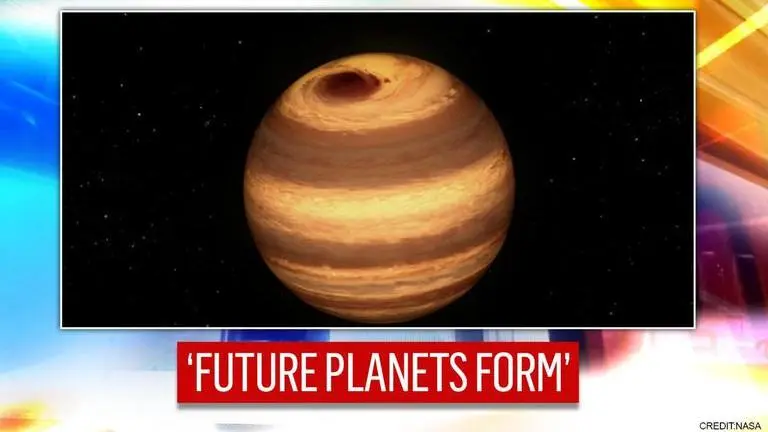Updated 10 October 2020 at 17:37 IST
NASA Observatory finds stars are factories for planetary formation and ingredients to life
“Turns out that these stars are like chemical factories churning out molecules important for life and we just needed observatory to find it," NASA's Alma said.
- Science News
- 3 min read

NASA’s Stratospheric Observatory for Infrared Astronomy found that the inner region surrounding massive young stars is where young planets begin to form due to the availability of massive quantities of water and organic molecules. The observatory’s telescope delved into the new tangent of the chemistry inside the swirling, disk-shaped clouds that engulfed the stars abound in ingredients that fed the earliest stages of planetary formations. In a press release, NASA said that the similar process led to the formation of the Sun, Earth, and the inner rocky planets.
“We’re seeing many more molecular signatures than were ever seen before at these wavelengths,” lead author of the study and a doctoral candidate at Leiden University in the Netherlands, Andrew Barr, said in the update.
“It turns out that these stars are like chemical factories churning out molecules important for life as we know it and we just needed the right kind of observations to see them,” he added. NASA’s Alma Observatory revealed the knowledge of the planetary formation around the stars by the condensing in a disc of molecular gas and dust. The process of molecular cloud condensation over a prolonged period of time leads to the creation of the giant planet, which, also possibly forms orbits in the disc and bends it, the observatory revealed in an ALMA studies.
[The disc mass of Jupiter is set to that of the Butterfly Star (IRAS 04302+2247) in Taurus, simulation (Wolf & D’Angelo 2005) of ALMA observations revealed. Credit: Alma observatory]
ALMA probes the phases of planet formation, including protoplanetary discs – planetary embryo creation. “A simulation (Wolf & D’Angelo 2005) of ALMA observations at 950 GHz of a disc shows an embedded protoplanet of 1 Jupiter Mass around a 0.5 Solar Mass star (orbital radius: 5AU),” it said in a research simulation.
Advertisement
“This study is very exciting as it demonstrates the power of infrared observatories to sense the presence of simple organic compounds that were important for the origin of life on Earth, and possibly other planets, said Klaus Pontoppidan, project scientist for the Webb telescope at the Space Telescope Science Institute in NASA’s release.
“One of the most important goals of both Webb and SOFIA is to understand the origins of stars and planets — and ultimately ourselves.”
Advertisement
Scientists used 'spectra' to discover stars
NASA’s SOFIA infrared observations, a Boeing 747SP jetliner's modified 06-inch diameter telescope, revealed a similar view of star chemistry. It goes to explain that infrared light from the stars shattered to various component colours, forming a series of bright lines, called spectra. “Scientists use them to identify which substances are in and around stars,” NASA informed. These chemical fingerprints were observed by SOFIA’s instrument that revealed stars 40 times the mass of our Sun. “NASA’s James Webb Space Telescope, which will study the formation of Sun-sized stars,” NASA said in the release, adding, it will comprise the space agency’s future target studies.
Because massive star formation is likely a scaled-up version of what occurs in smaller, Sun-sized stars, this research can be a benefit to scientists studying Sun-like stars with @NASAWebb. https://t.co/3Z133ZldJU
— SOFIAtelescope (@SOFIAtelescope) October 8, 2020
Published By : Zaini Majeed
Published On: 10 October 2020 at 17:37 IST

